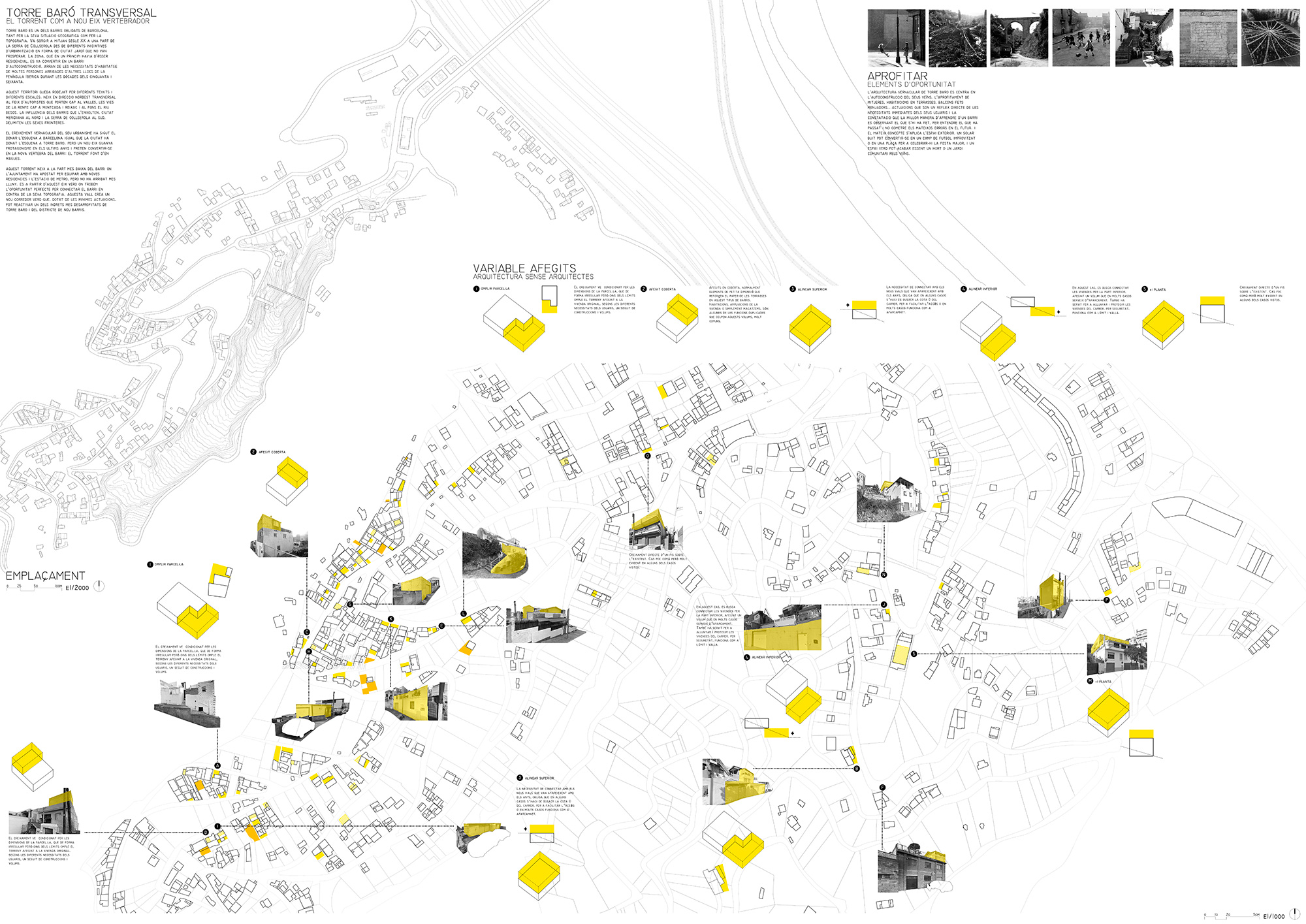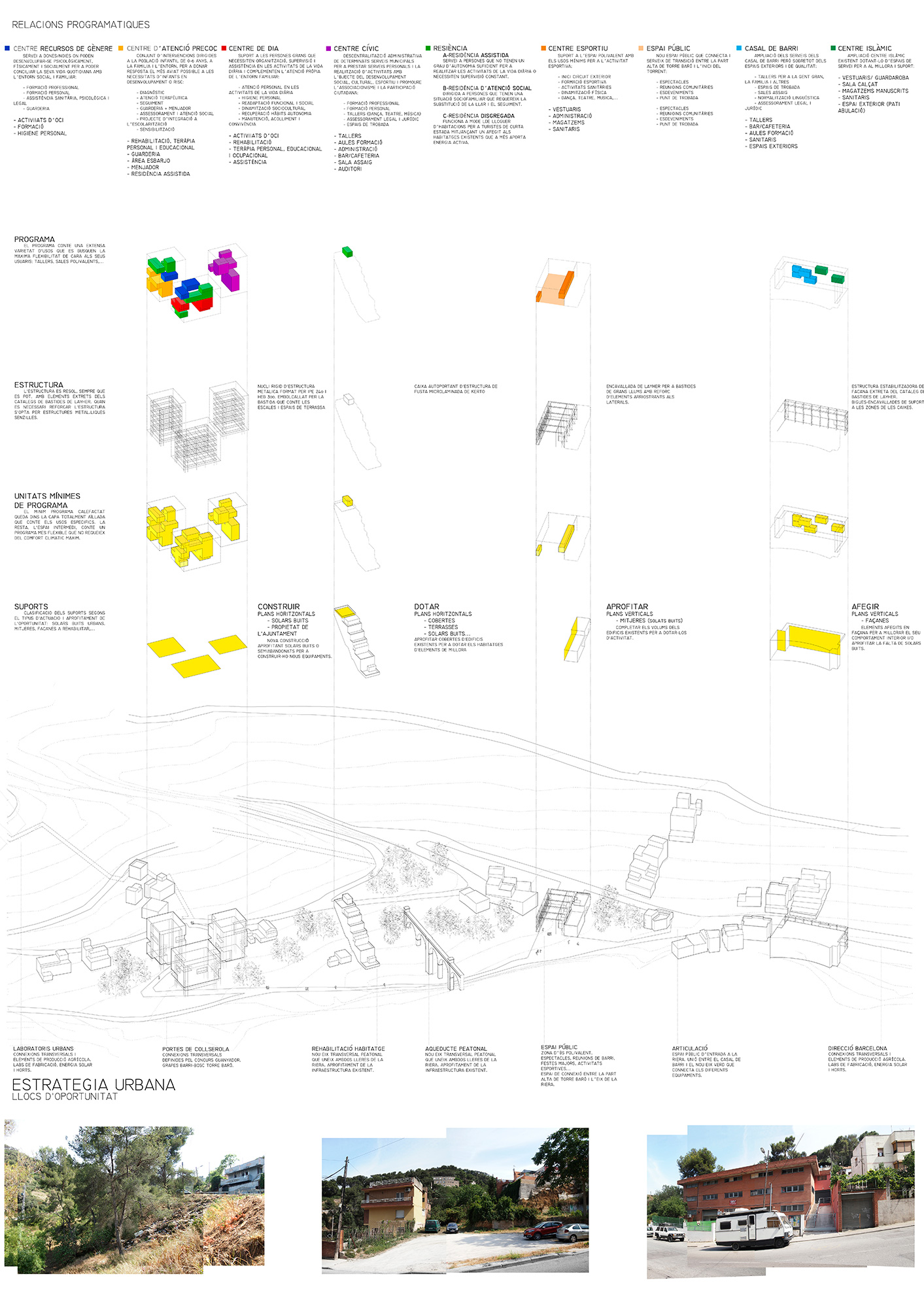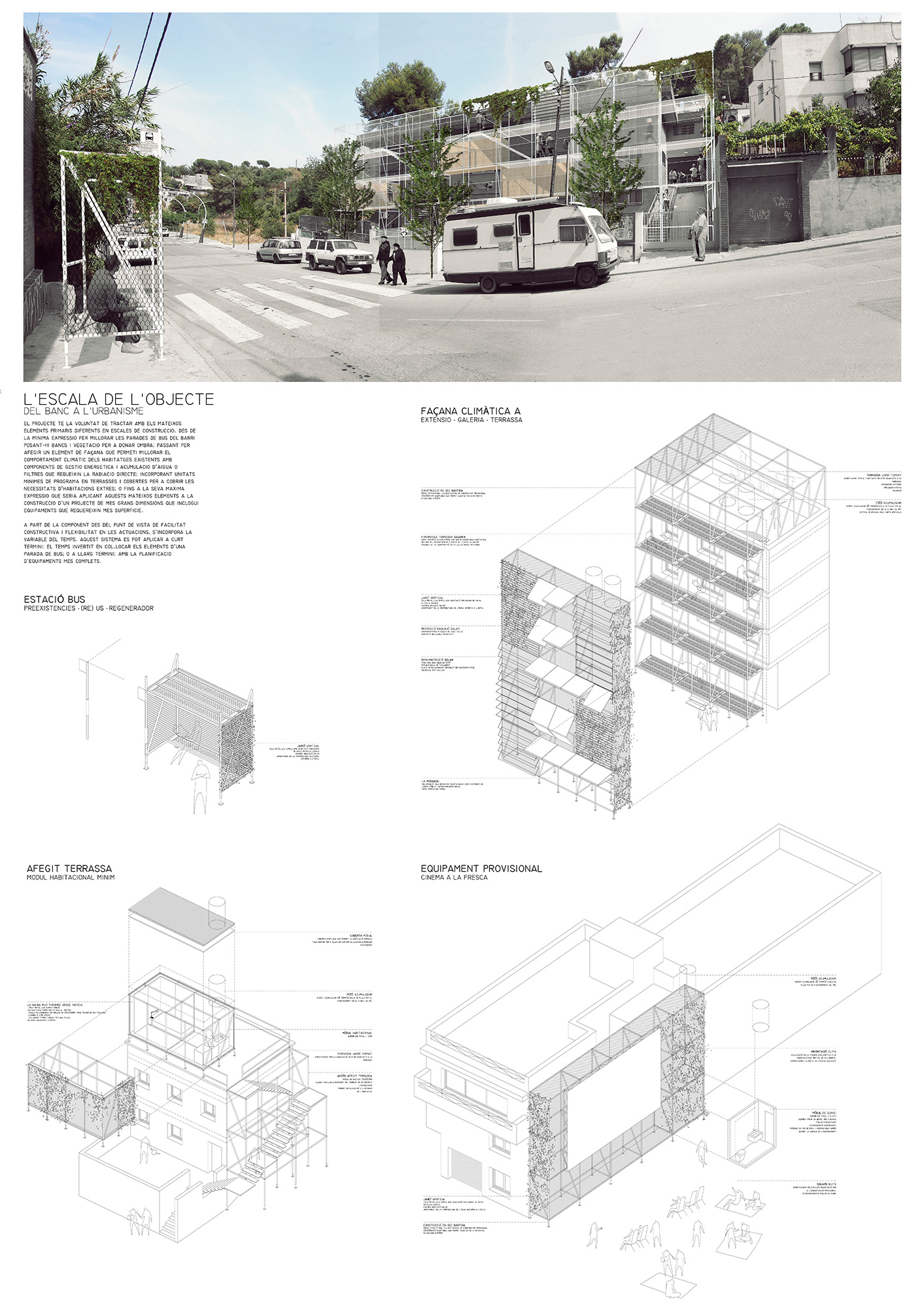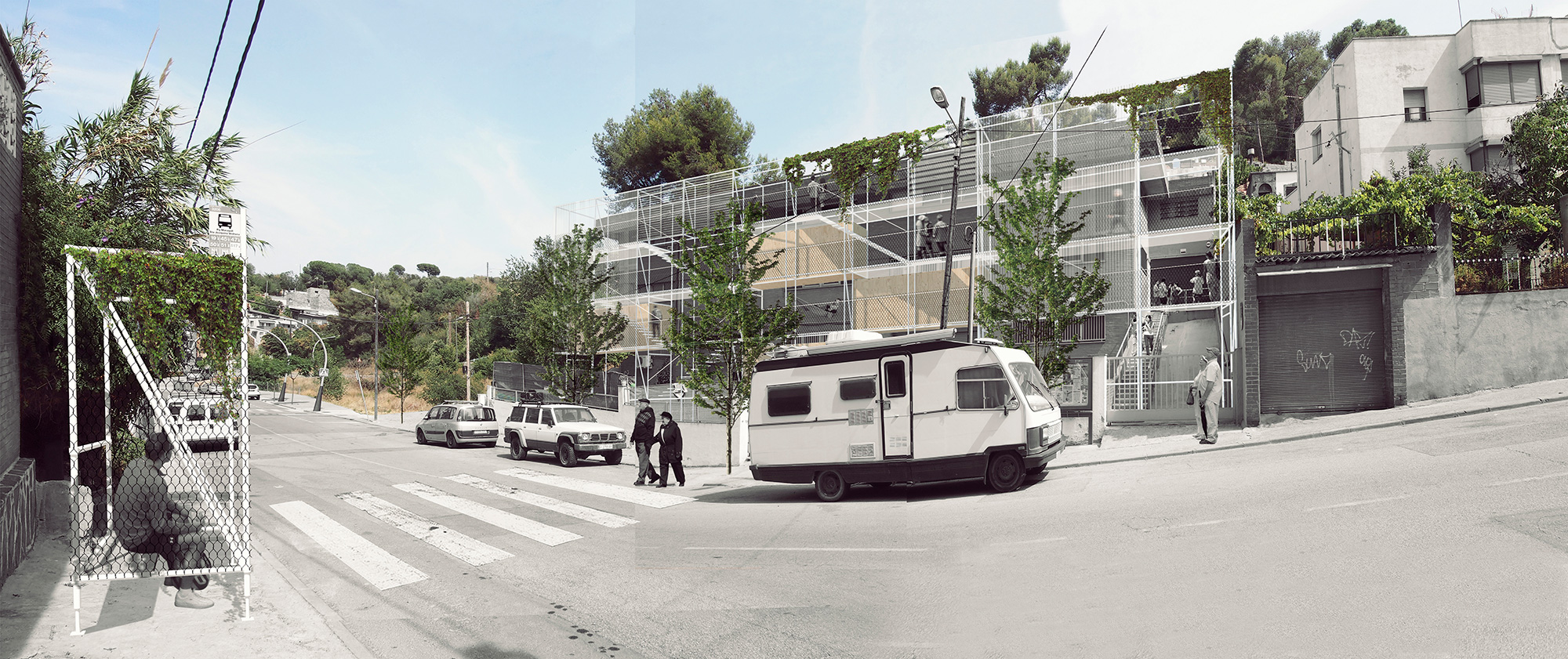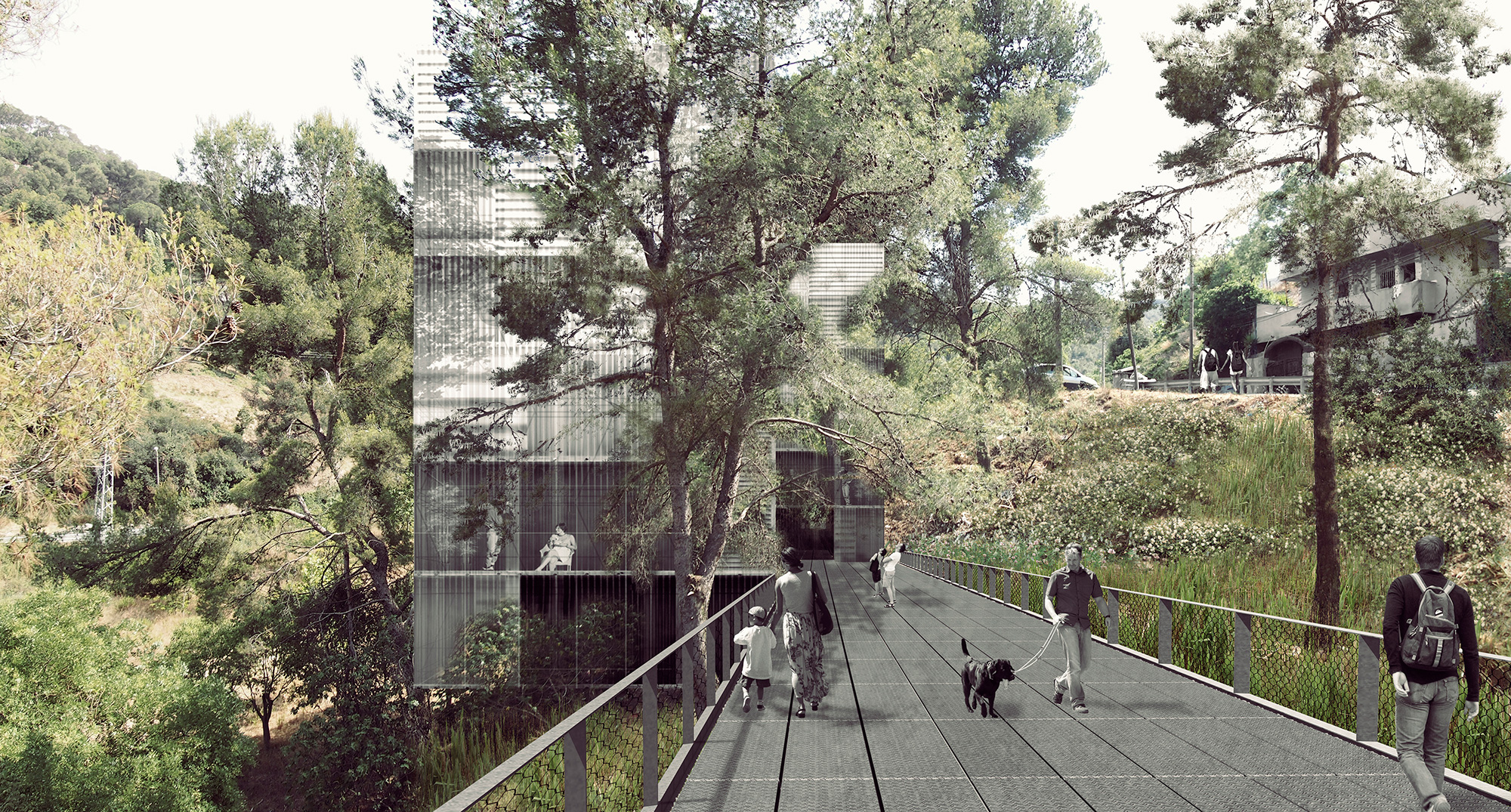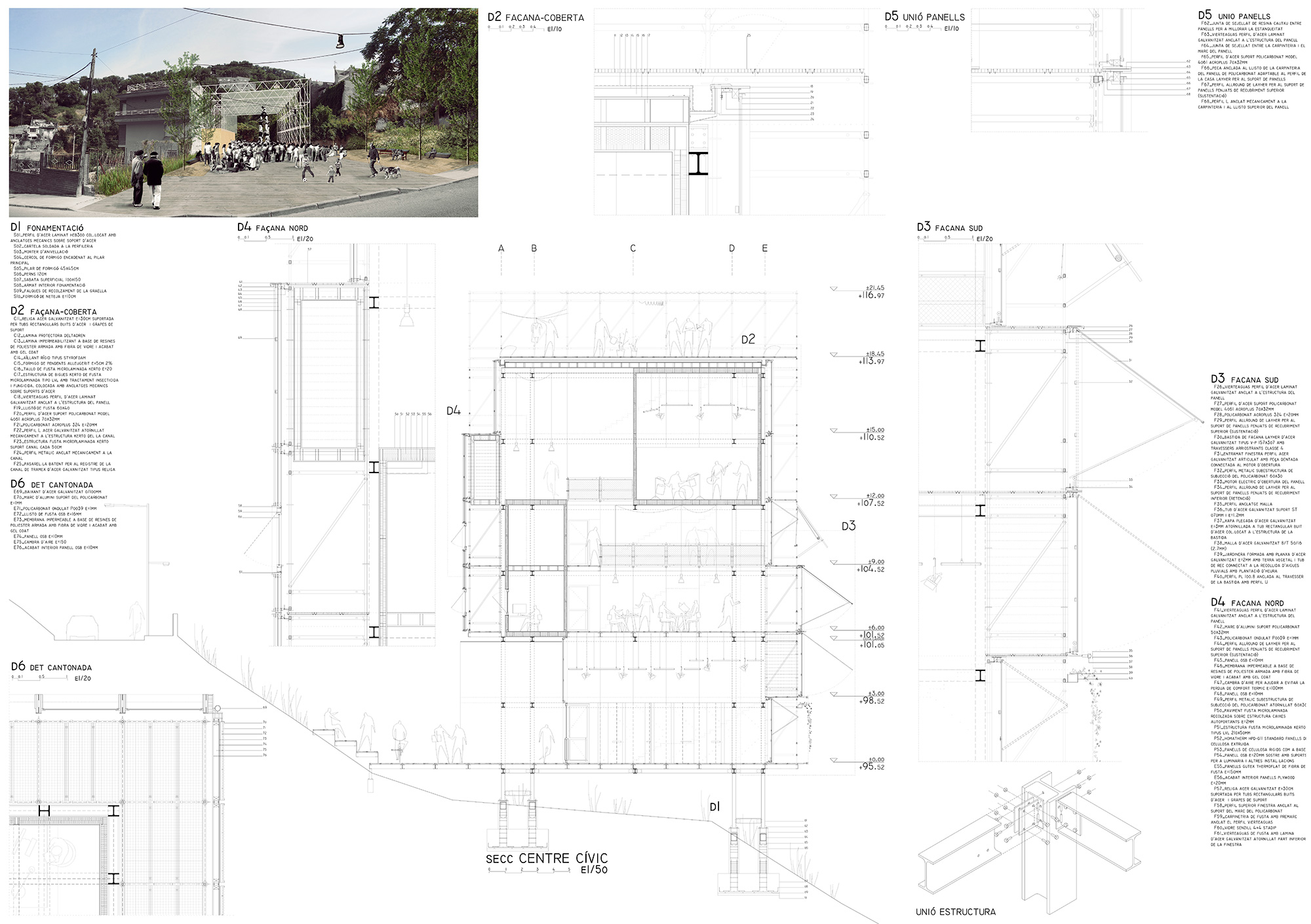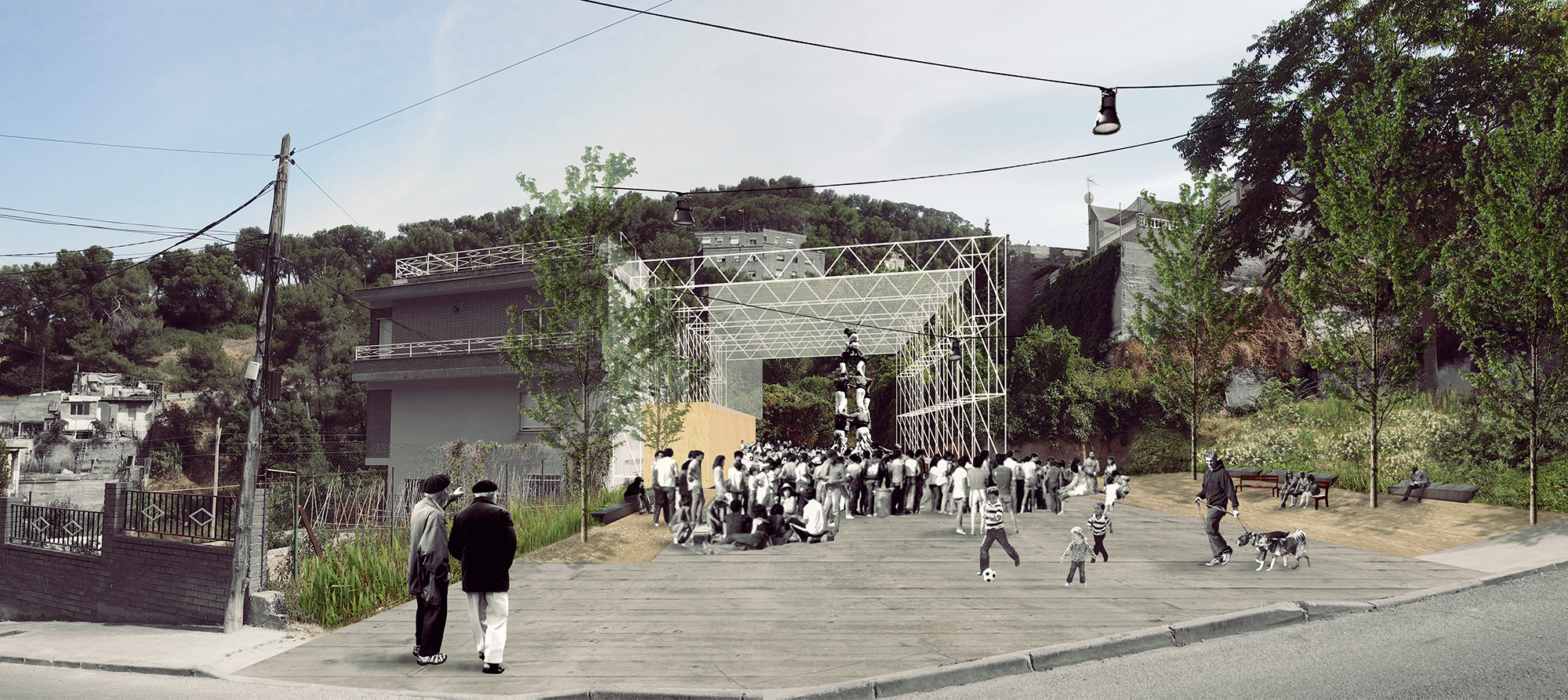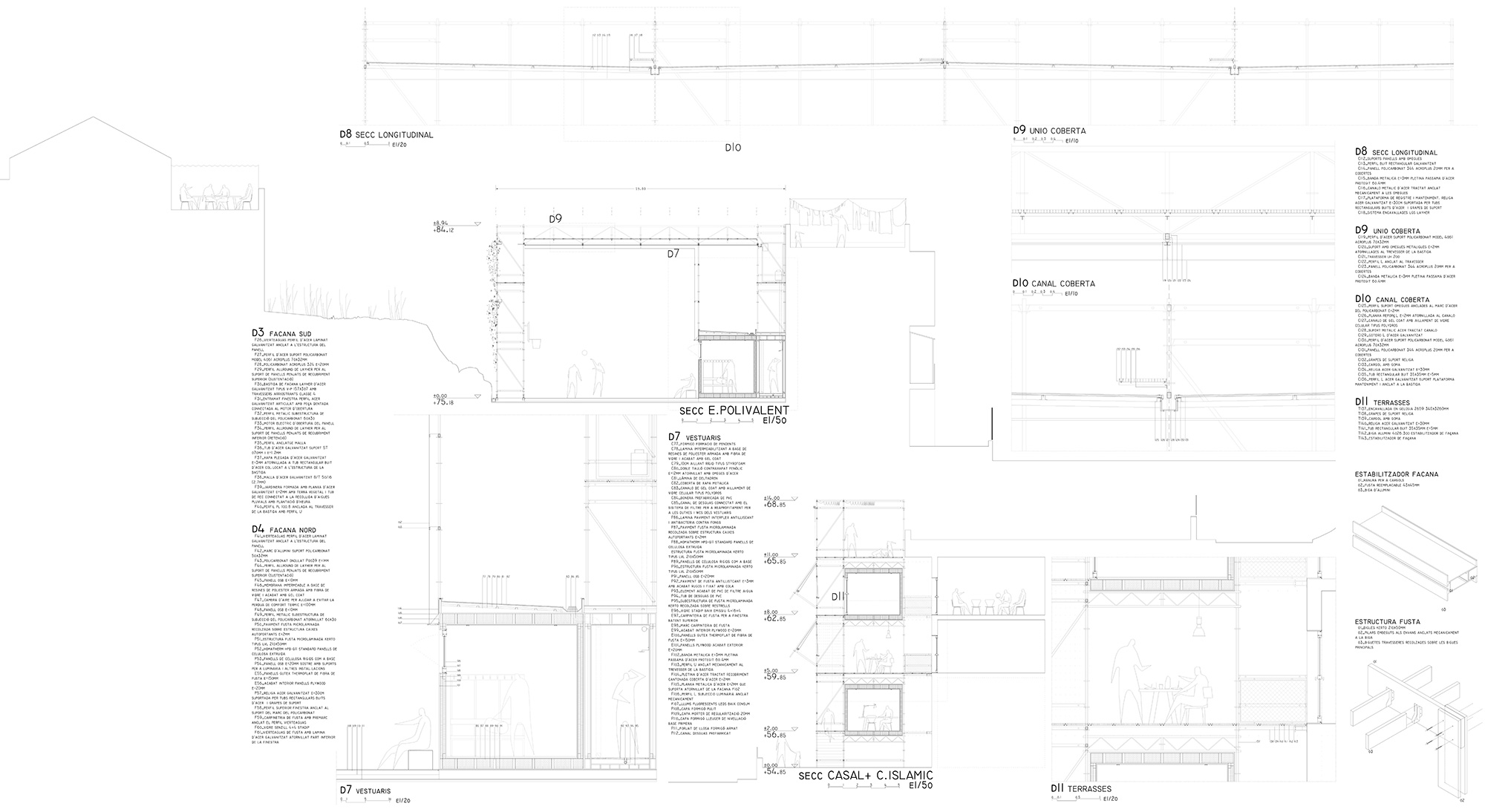☉ Torre Baró is a proposal by Arnau Sumalla Reig for ETSA Barcelona in 2016. It is located in Barcelona Spain in an urban setting. Its scale is medium with a surface of 4.000 sqm. Key materials are metal and wood.
Torre Baró is one of the forgotten neighborhoods of Barcelona, both for its geographical location and its topography. It arose in the middle of the twentieth century in Collserola from various development initiatives as a garden city that did not thrive. The area initially was to be residential and became a self-construction area as a result of the housing needs of many people arriving from other parts of the Iberian Peninsula during the decades of the fifties and sixties.
This territory is surrounded by different tissues and different scales, born in the northeast direction transversal to the bundle of highways leading to the Valles, the RENFE railroads to Moncada and Reixac and the river Besos. The influence of neighborhoods surrounding it, Ciutat Meridiana to the north and Collserola to the south, delimit its borders.
The vernacular growth of its urban planning has been by turning back to Barcelona as the city has turned its back on Torre Baro. But a new axis gains prominence in the recent years and aims to become the new backbone of the neighborhood: el torrent font d’en magues.
This stream rises in the lowest part of the neighborhood where the council has decided to build up new residences and metro stations, but has not gone further. It is in this green area where we found the perfect opportunity to connect the neighborhood against its own topography. This valley will create a new green corridor, which with some minimum interventions, may revive one of the most wasted areas from Torre Baro and the Nou Barris district.
Taking advantage of the opportunity items
Torre Baró vernacular architecture focuses on the self-construction activity of their neighbors. The use of party walls, rooms in terraces, balconies converted into living rooms… actions being a direct reflection of the immediate needs of its users and the realization that the best way to learn is by observing what has been done, to understand what happened, to avoid repeating the same mistakes in the future. The same concept applies to the outer spaces. An empty plot may become an extempore football field or a place to celebrate a festival, and a green space can end up being an orchard and a communal garden for the residents.
The scale of the object
The project aims to deal different primary scales of construction with the same elements. Since the minimum intervention to improve the bus stops by placing benches and vegetation to provide shade; adding an element of façade to improve the climate performance of the existing homes with energy management components and accumulation of water or filters reducing the direct radiation; incorporating minimum units of program in terraces and decks to meet the needs of extra rooms; to the maximum intervention which would apply these same elements in the construction of a large project including equipment that requires more surface.
Besides the component from the point of view of easiness and flexibility in constructive activities, the variable time is integrated to the project. This system can be applied in the short term: the time taken to place elements in a bus stop; or the long-term planning of more complete facilities.
Situation
Interventions are located along the axis of the Torrent Font d’en Magues willing to provoke tension points between them and generate activity at the same time. The Torrent has several planned actions resulting from the ‘Collserola doors’ contest.
The first point is located in the plot where the project presented by Habitat Urbà and the Town Hall was developed. It takes advantage of the connection point from the Escolapi Cancer Avenue to the lowest point of the river expected in the interventions that will cross and connect both valley riverbeds, a neighborhood-forest clamp to promote this hitherto nonexistent directionality.
One of the most critical points when addressing the revitalization of the river was upstream. The relationship that is created between the existing neighborhood and the new green axis. In this articulation there is a plot owned by the Town Hall, a chance to recover empty urban spaces providing them with activity. Another peculiarity of this location is that this site has a dividing wall that becomes a perfect opportunity to apply the system in another context. This place will work as a transition between the green axis and the Escolapi Cancer avenue, the backbone route from the lower part of Torre Baró.
The last point takes advantage of the facade of the building that currently contains the community center and an Islamic center that uses some old warehouses as an equipment for the neighbors. Furthermore it is placed in the mouth of the neighborhood, becoming an element that will drive users towards the public transport points and thus to the rest of the city.
Three places, three scales and a unique system willing to solve the various problems of the district.
Zero-phase
The project, beyond finding a way to be, wants to be defined as a way to do. The peculiarity of the system, only a little similar in shape to the vernacular architecture of the neighborhood, wants to be alike in function to the spaces defining Torre Baró.
Places avoiding the topography not elegantly but effectively, creating unexpected spaces that surprise the pedestrians and especially enabling an infinite variety of uses as wide as you the neighbors can imagine.
The flexibility in the construction and in the definition of architecture, intends to be a zero-phase project for possible future actions. Extensions or adding new layers and elements that demonstrate the evolution according to the needs of people at all times. As it has happened in the Torre Baró district, an architecture constantly changing, projects that never are considered finished but that set a basis, an initiated sheet to go on writing new stages and new ways of understanding them.
